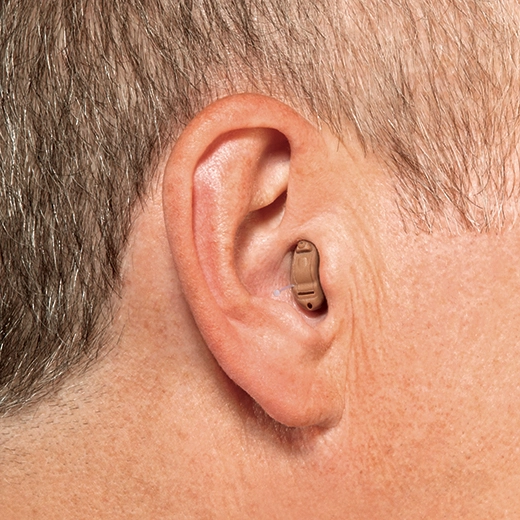6 Tips for Adjusting to New Hearing Aids
Make your experience with a new hearing system great with these helpful tips.
Whether you’re a first-time hearing aid user or a longtime wearer, advancements and changes in technology mean your new hearing system will take some time to adjust to — and depending on how outdated your old system was, you may even have an entirely new level of listening clarity!
But this means there’s likely to be an adjustment period for your ears and your brain. Even if you’ve been through this adjustment period before, the tips below can help ease the transition and help you get the most out of every listening experience.
- Take it easy at first. Though having new hearing aids means you’ll be hearing better than you have in years, it doesn’t happen immediately. Your hearing system is stimulating nerves that may not have been stimulated in a long while; it takes time for your brain to adjust and organize the new sounds you’re hearing. Try wearing your hearing aids for only an hour or two at first to ease into your new technology and to make sure it’s tuned to fit your exact needs. Adjustments can always be made during follow-up appointments if something doesn’t feel or sound quite right.
- Understand the expectations. A quality hearing system won’t fix all of your hearing problems right away — it takes time and effort. It probably took many years for the hearing damage you suffered to accumulate into a noticeable hearing loss; likewise, it’s probably going to take some time to renew your hearing. And while you may never hear just as well as you did before your hearing was damaged, over time your technology is very likely to improve your overall quality of life by leaps and bounds. Stay positive, and remember that you’ll adjust to your technology within a few weeks.
- Adjust your voice. Those with hearing loss sometimes have a tendency to speak more loudly than others as a way to compensate for an inability to hear very well. When you wear your technology for the first time, you’ll probably know whether you were one of those people. It may take some time to adjust to hearing yourself a little bit differently — and more clearly.
- Learn the devices. If this is not your first pair of hearing aids, you may notice some differences in technology. Many hearing aids these days offer an array of customizable options, programmable modes, advanced microphones that cut out sound, and wireless options to connect your hearing system to your cell phone or other audio source (like a TV, computer, or stereo) via Bluetooth®. Learning how to take advantage of the features of your hearing system can provide a huge benefit to your experience. Contact us for more information on what your hearing system can do that you might not be aware of!
- Get the best seats. When hearing loss is a factor, even the slightest change to your seating can make a huge difference. This is a common tip for those gathering around the table for holidays, but it’s applicable here, too: Choose or ask for seats that offer the best acoustics, which typically means near the center of the room or in front of whatever the primary sound source is. Your hearing aids are powerful enough to catch most details, but until you get used to how your new units capture sound, good seating makes this adjustment period easier.
- Care for your technology. While specific hearing aid styles keep mostly the same shape through the years — even when advancements are made — there are usually subtle changes that you may not be aware of initially. This is especially true if you’ve switched to another type of hearing aid (going from a behind-the ear style to a half shell, for example). Knowing how to take care of and maintain your new hearing system is crucial to the life of the technology and to ensuring that you’re getting the most out of your units. Be sure to follow any manufacturer instructions and advice from your audiologist!
If you’re still getting accustomed to your new devices and have questions, we’d love for you to come in and let us help you out at any time. Just call our office and we’ll schedule an appointment for you at your nearest convenience.


